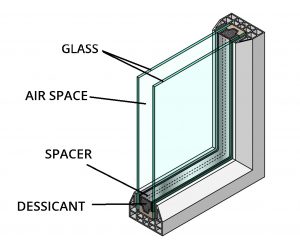All Categories
Featured
Table of Contents
Double-glazing Versus Low-e Glass in The Vines Perth
That window can transfer more solar heat in winter than in summer season. A west-facing window on a summer's afternoon has an angle of occurrence from near 0 up to 30 with a big effective area of solar radiation. A north-facing window, in summertime, has a high angle of incidence and a low effective location of solar radiation, so can transmit less heat than a west-facing one.

You can quickly and quickly improve the thermal efficiency of your house by changing your windows. There are thousands of types of glass and frames to select from.
Double Glazed Windows And Doors In Perth in Rivervale Western Australia
Single glazing with clear glass is not extremely efficient when it comes to heat loss or gain. To enhance efficiency, you can use single glazing with a more energy-efficient type of glass such as low emissivity (low-e) glass.
Several layers can be put together with sealed cavities in between each sheet of glass. IGUs generally provide better energy efficiency than single glazing, due to the fact that they transfer less energy. The energy performance of IGUs also depends on: the homes of each layer of glass. Various glass types (for example, clear and low-e glass) can be put together in an IGU.
Double Glazing Vs Triple Glazing For Windows (2023) in Dianella Western Australia

IGU cavities can be filled with air or a more inert, low-conductivity gas such as argon the width of the cavity. Cavity thickness is usually 6 to 18mm. Wider cavities provide lower (much better) U worths, with 12mm usually accepted as the favored space how well the cavity is sealed. Cavities should be dry and well sealed to prevent moisture getting in.
If argon is installed to the cavity in location of air, moisture is reliably omitted the level of desiccant (drying agent). The spacer (metal or polymer strip) that separates the glass layers consists of a desiccant to take in any wetness. Insufficient desiccant might trigger wetness to condense on the glass surface in cold conditions, decreasing thermal performance.
Save Energy With Double Glazed Windows in East Victoria Park WA
IGUs can deliver much better energy performance for all climates, especially in heated and air-conditioned homes. Cross-section information of single, double and triple-glazing systems Low emissivity glass (typically called low-e glass) lowers heat transfer. Low-e glass may be either high or low transmission: High transmission low-e glass has a coating that enables daylight from the sun to enter the home to accomplish excellent solar heat gain, but minimizes the amount of the long wavelength infrared heat that can leave back through the window.
Low-e glass has either a pyrolytic finish or a vacuum-deposited thin film metal finishing. Pyrolytic coverings are resilient and can be utilized for any glazing; vacuum-deposited finishings are soft and are only used within IGUs. Low-e coatings can considerably improve both U value and SHGC; however, they need to be used correctly or they will either weaken or fail to carry out as required.
5 Benefits Of Double Glazing Windows in Myaree Western Australia
Low-e finishings can be utilized in combination with clear, toned or reflective glass. Low-e coverings on glazing can lower heat transfer where needed Picture: Department of Industry, Science, Energy and Resources Toned glass has colouring additives included throughout manufacture. It is offered in different colours, usually bronze, grey, blue and green.
Table of Contents
Latest Posts
8 Benefits Of Double Glazing To Take Advantage Of in Orelia Perth
Which Type Of Double Glazed Window Frame Is Right For You? in Ocean Reef Western Australia
Twinglaze® Double Glaze Specification Act - Vic in Inglewood WA
More
Latest Posts
8 Benefits Of Double Glazing To Take Advantage Of in Orelia Perth
Which Type Of Double Glazed Window Frame Is Right For You? in Ocean Reef Western Australia
Twinglaze® Double Glaze Specification Act - Vic in Inglewood WA